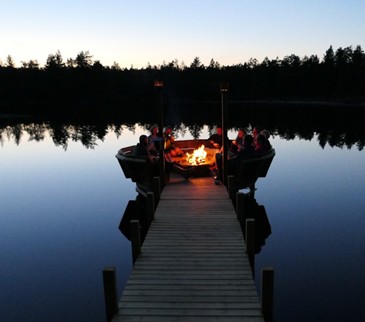
A well-organized staff retreat can be one of the most effective ways to boost morale, improve communication, enhance team collaboration, and foster a positive work culture. Whether you're aiming to celebrate accomplishments, tackle challenges together, or inspire creativity, a retreat offers a unique opportunity to step away from the daily grind and invest in your team’s overall well-being. To make your staff retreat truly unforgettable, careful planning and thoughtful execution are essential. One of the first steps is selecting the right location, and choosing the perfect corporate event venue can make all the difference in setting the right tone and environment. In this article, we will explore practical tips and strategies to help you host a retreat that leaves a lasting impact on your team.
The first step in organizing any successful event is defining its purpose. A staff retreat is no different. Before diving into logistics, take some time to discuss with your leadership team the key objectives of the retreat. Do you want to build stronger relationships among team members? Are you looking to focus on team-building exercises or strategic planning? Or perhaps you want to celebrate your team's successes and recharge their energy?
By setting clear goals, you will guide the direction of your retreat and ensure that activities, discussions, and the venue align with your vision. Without a clear purpose, a retreat can easily become disorganized or fail to meet expectations. Some common objectives for a staff retreat include:
Team Building: Strengthening relationships and improving collaboration.
Strategic Planning: Discussing company goals, future projects, or refining your mission.
Celebration: Recognizing milestones, achievements, or personal accomplishments.
Employee Development: Offering professional development opportunities, training, and workshops.
Once you’ve defined the purpose, communicate this to your team to set the tone and help everyone prepare mentally for the experience.
Choosing the right location is crucial to creating the right atmosphere for your staff retreat. A successful retreat location should be accessible, comfortable, and conducive to both work and relaxation. Whether you opt for an urban venue or a more tranquil setting in nature, consider the following factors:
Proximity: Select a location that is easily accessible to all staff members. If you’re hosting the retreat for a local team, choose a location close enough to avoid long travel times. For remote teams, select a venue that is central for everyone.
Ambiance: The location should match the overall tone of the retreat. If you’re focusing on relaxation and recharging, consider a retreat in a serene environment, such as a mountain lodge, beach resort, or nature retreat center. For team-building activities or planning sessions, an urban venue with conference spaces may be ideal.
Comfort: Ensure that the venue has adequate amenities like comfortable seating, enough meeting space, and appropriate facilities for breaks, meals, and lodging if necessary.
Activities: Consider the availability of nearby activities for downtime. Nature walks, hiking trails, or team-building facilities such as a ropes course can provide opportunities for both fun and relaxation.
An effective retreat agenda strikes the right balance between work and play. Too much focus on one or the other can result in burnout or disengagement. A well-rounded retreat should include:
Workshops and Presentations: Offer meaningful sessions that align with your retreat’s objectives. This may include presentations on business strategy, leadership training, or personal development. Keep sessions engaging and interactive to maximize participant involvement.
Team-building Activities: Team-building exercises are essential for enhancing communication, trust, and collaboration. These activities can range from problem-solving challenges and role-playing exercises to outdoor team-building games. These activities should allow employees to work together outside the usual office dynamics, encouraging creativity and building relationships.

Free Time: While structured activities are essential, it's also important to allow for some downtime. This gives your team a chance to relax, recharge, and have informal interactions. Providing free time for individual reflection or group socializing helps to reinforce team bonds in a more organic way.
Meals and Social Events: Meals should be seen as an opportunity for team bonding, not just a break between activities. Consider incorporating team-building meals such as potlucks, barbecues, or themed dinners. Adding a social event, such as a happy hour or a bonfire, can further strengthen relationships in a relaxed environment.
When designing your retreat agenda, consider varying the activities to keep participants engaged. A mixture of high-energy, thoughtful, and fun activities will ensure the retreat remains dynamic and exciting.
Team-building exercises are often the highlight of staff retreats because they encourage collaboration, trust, and communication among team members. Consider a combination of low and high-intensity activities to meet the needs of different personality types within your team.
Here are some team-building exercises that can work well during a retreat:
Icebreakers: Start the retreat with light-hearted icebreaker activities that help people get to know each other better. Simple games like “Two Truths and a Lie” or “Human Bingo” can create an atmosphere of openness and connection.
Problem-solving Challenges: Activities like escape rooms, scavenger hunts, or group puzzles require teams to work together to achieve a common goal. These types of exercises foster teamwork, creative thinking, and adaptability.
Group Discussions or Brainstorming Sessions: Encourage input from everyone on important topics such as company goals, personal aspirations, and team strategies. This fosters a sense of involvement and ownership over the company’s direction.
Outdoor Activities: Depending on the location, outdoor activities such as hiking, rafting, or obstacle courses can help break the monotony and allow teams to build relationships in a more relaxed setting.
Involving leadership in the retreat is important to ensure that the vision and goals for the retreat align with the company’s overall strategy. However, it’s also important that staff members feel empowered and involved in the planning process. Encourage employees to share their thoughts and ideas on what would make the retreat more valuable to them.
Incorporating feedback from your team will ensure that the retreat addresses their needs and expectations, resulting in a more meaningful experience for everyone. After the retreat, take the time to collect feedback and evaluate the success of the event. Did the retreat meet its objectives? Were employees engaged? What areas could be improved for future retreats?
One of the keys to hosting a successful staff retreat is ensuring that the environment is comfortable and conducive to participation. This means providing the right accommodations, a comfortable temperature, and plenty of opportunities for team members to connect outside of structured activities.
Here are some tips for creating a comfortable retreat environment:
Comfortable Accommodations: If your retreat spans multiple days, ensure that lodging is comfortable and accessible. Provide options that cater to the needs of your team, whether it’s single rooms, shared rooms, or suites with workstations.
Catering and Refreshments: Plan for a range of meals and snacks to keep your team energized throughout the retreat. Offer healthy, delicious options and be mindful of dietary restrictions. Providing beverages such as coffee, water, and tea is essential for keeping everyone alert and focused.
Relaxation Areas: Designate areas for team members to relax between activities. Comfortable seating, reading materials, or even quiet spaces for personal reflection can enhance the retreat experience.
Flexible Meeting Spaces: Ensure that there are flexible spaces for meetings and activities that can be adjusted based on group size. Consider venues with versatile layouts, so you can easily transition from one type of activity to another.
How you close your retreat is just as important as how you begin it. Ending the retreat with a positive, uplifting activity will leave your team with a sense of accomplishment and excitement about applying what they’ve learned. Consider hosting a closing ceremony where you highlight key takeaways, thank participants for their contributions, and celebrate any goals that were achieved.
Also, make sure to express gratitude to the team for their hard work and dedication, and let them know that you’re looking forward to implementing new ideas and initiatives that were discussed during the retreat.
A well-planned staff retreat is an investment that can yield tremendous returns in terms of team collaboration, communication, and overall company culture. By setting clear goals, choosing the right location, crafting a balanced agenda, and incorporating meaningful team-building activities, you can create an unforgettable retreat experience. When executed properly, a retreat can help strengthen relationships, inspire creativity, and ultimately drive your organization’s success. The tips and strategies outlined in this article will ensure that your next staff retreat is one that leaves a lasting impression on your team and sets the stage for future growth and collaboration.